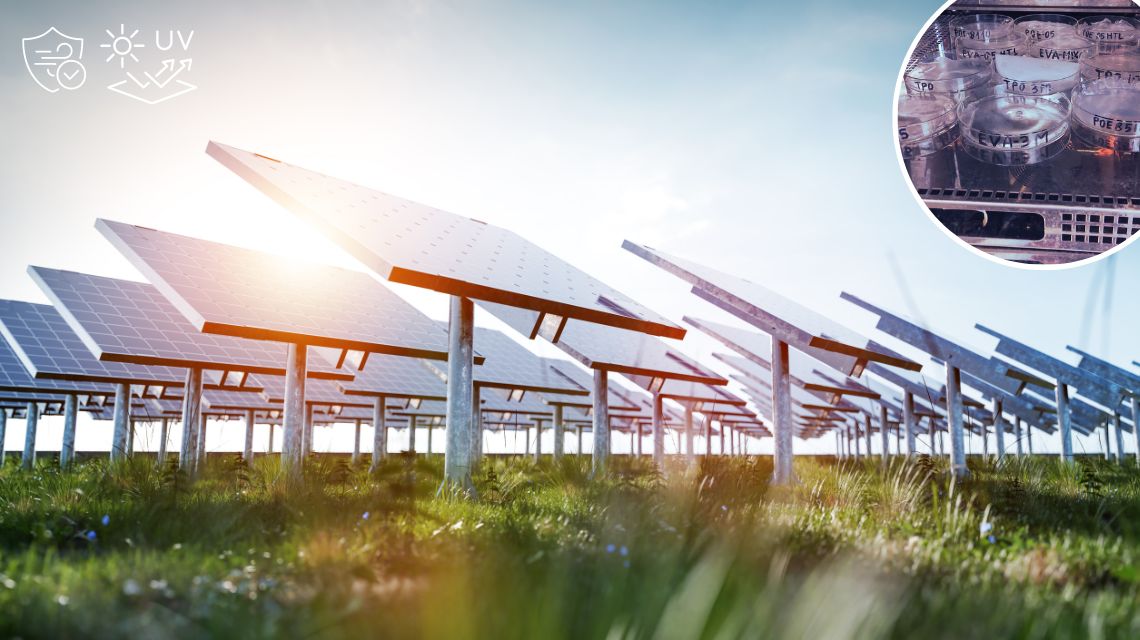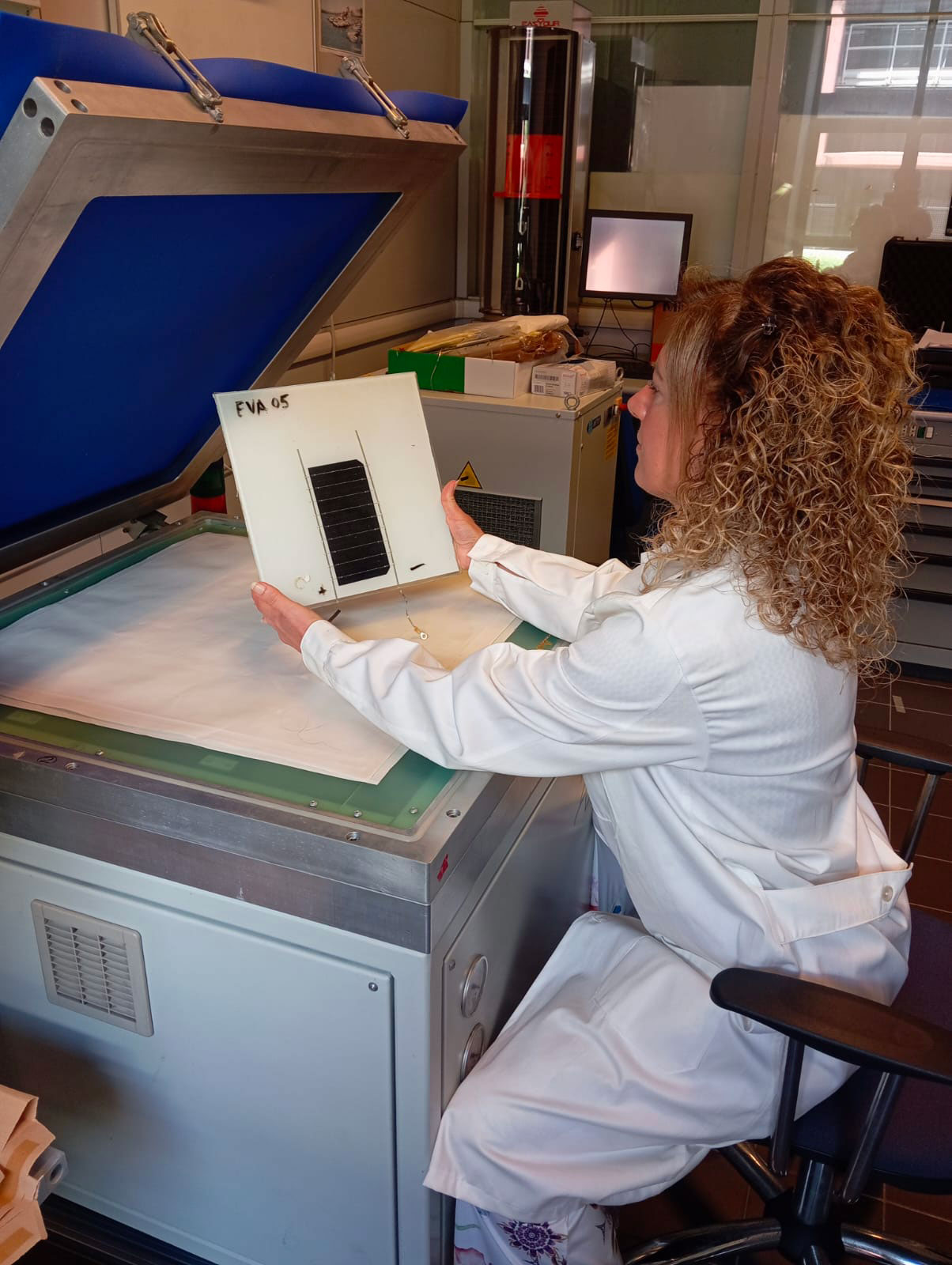Italian National Agency for New Technologies, Energy and Sustainable Economic Development

Energy: Solar panels, from ENEA innovative materials resistant to humidity and UV rays
A team of researchers at the ENEA Center in Portici (Naples) has developed innovative materials to protect photovoltaic panels against humidity and ultraviolet rays. “The preliminary tests published on ‘ScienceDirect’ are very encouraging and also highlight that the durability and resistance to ultraviolet rays of these new encapsulating films can be further improved by adding appropriate additives to the formulation,” explained Valeria Fiandra, researcher at the ENEA Innovative Devices Laboratory and co-author of the study with collegues Lucio Sannino and Concetta Andreozzi, Giovanni Flaminio (Energy and Data Science Laboratory) and Michele Pellegrino (Methodologies, Approaches and Tools for the Analysis of the Sustainability of Energy Technologies Section).
Encapsulating films are polymer-plastic materials used to protect photovoltaic cells from air and humidity; they play a key role in photovoltaic technology since they perform crucial tasks like providing structural integrity, preventing damage to cells, forming a barrier against humidity and ensuring reliability and durability of the module over time, protecting it from degradation due to atmospheric agents, light and oxygen.
Currently the most widely used encapsulant in photovoltaic modules is a polymeric material called EVA (Ethylene Vinyl Acetate)[1] which has excellent transmission of sunlight thanks to the presence of additives[2] that improve its optical and chemical properties. However, during the life of the module, EVA undergoes chemical degradation due to ultraviolet radiation, high temperatures and atmospheric agents leading to the formation of acetic acid, which causes the corrosion of the cells and subsequent deterioration of the module.
“To address the critical issues of EVA, we focused on alternative materials unaffected by acetic acid. There is also another type of plastic material, polyolefins[3], which havehas very interesting characteristics: compared to the commonly used EVA, it has greater thermal stability (up to 400 °C compared to 300 °C for EVA), greater resistance to degradation by UV rays and a better barrier against humidity”, pointed out Valeria Fiandra.
The new materials can be recycled and processed multiple times and make it potentially easier to disassemble the module at the end of its life, allowing to recovery valuable and recyclable materials and thus improving the economic and environmental sustainability of its entire life cycle.
"Overall, we found that the choice of polyolefins as alternative photovoltaic encapsulants is a good compromise among optical properties, thermal resistance to high temperatures, transparency and resistance to photoaging. Our activity aims at providing companies with a useful tool for choosing the most suitable encapsulating film to manufacture high-performance modules that last over time", concluded the ENEA researcher.
For more information please contact:
Notes
[1] EVA is a thermosetting polymer that, under appropriate temperature conditions and/or in the presence of particular substances, turns into rigid, insoluble and infusible materials. This transformation occurs following cross-linking reactions, a process through which the polymer chains undergo a reaction that creates strong bonds. These polymers are difficult to recycle because the new bonds formed following the cross-linking operations are permanent. On the other hand, thermoplastic polymers, such as polyolefins, are made up of linear, slightly branched chains that are not linked together by covalent or ionic bonds. This means that thermoplastic polymers become malleable when heated and return to a solid state when they cool. They can be melted and reshaped many times, without undergoing chemical alterations or degradation.
[2] Cross-linking agent, light stabilizer, antioxidant, ultraviolet absorber.
[3] Elastomeric and thermoplastic polyolefins (POE and TPO).

